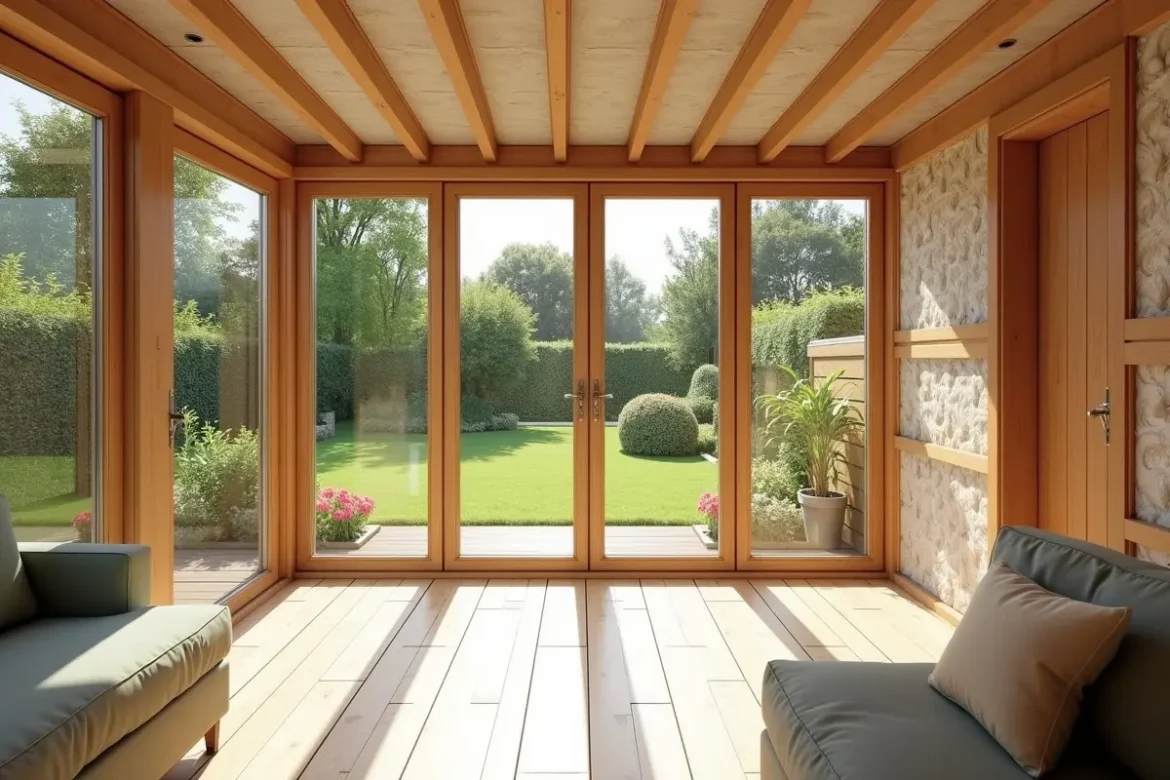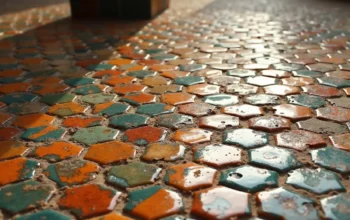
Have you ever stepped foot inside your garden sun room in the winter and immediately turned around?
You’re not alone. The sad reality is that most sun rooms become glorified garden storage cupboards for half of the year.
Too cold in winter, and too hot in summer.
Why?
Let’s face it…
Traditional sun rooms are terrible at energy efficiency. All that gorgeous glass which makes them such a dream during the summer? That same glass that causes such a headache in winter.
But it doesn’t have to be that way…
Sun rooms can be insulated to become the most-used room in your house. All year round. And the bonus? You’ll actually save money in the long run. Modern garden sun room kits come with insulation options built in, but even existing sun rooms can be transformed into four-season retreats with the right approach.
Think about it…
What’s the point of having extra living space, only to not be able to use it 6 months of the year?
So how do you do it? Here’s everything you need to know…
Insulating a garden sun room is a relatively simple, step-by-step process. For example, you should start with weather-proofing any windows and doors. The next big step is proper insulation of the floor, walls and roof. The good news is that there are many DIY solutions out there which can actually save you money in the long term.
Of course, there are some things to watch out for, like moisture build-up (no-one wants mould!) and preventing overheating in summer. But that’s all part of the plan. Because the right insulation also means the room can be well-ventilated too. And that keeps it comfortable in summer, as well as winter.
So without further ado, here’s everything you need to know about insulating your garden sun room:
Contents
What you’ll learn:
- Why Your Sun Room Feels Like An Icebox (Or Sauna)
- The Real Cost Of Not Insulating Your Sun Room
- Smart Insulation Strategies That Actually Work
- Money-Saving Installation Tips
Why Your Sun Room Feels Like An Icebox (Or Sauna)
Here’s what’s really going on in your garden sun room…
Windows and doors. They’re not great at insulating in their basic form. If you have single-glazed windows, they have a U-factor of 1.1, which is a fancy way of saying they’re energy sieves. And most older sun rooms have single-pane glass. Most of them.
Even worse…
The average sun room loses heat in the following areas:
- Thin glass windows: little to no insulation
- Gaps around window frames: often unsealed
- Bare floors that conduct the cold straight into the room
- Minimal ceiling insulation (if any)
It’s like trying to heat your garden. Ridiculous. And expensive.
But here’s the thing…
It’s not just the glass that’s the problem. It’s the entire structure. Most sun rooms are built as three-season structures, which means the builder/contractor used next to no insulation.
Why? It was cheaper to build. And they assumed you’d only use it in fine weather.
WRONG.
The Real Cost Of Not Insulating Your Sun Room
Did you know…
According to EPA estimates, homeowners save an average of 15% on heating and cooling costs by properly insulating their homes.
For sun rooms? The savings are even greater.
Think about your current set up. You’re either:
- Avoiding it (dead square footage)
- Running space heaters or portable AC units (costly and wasteful)
- Heating/Cooling it from your main house (bleeding money)
Not good.
Here’s the kicker…
Running a space heater in your sun room could be costing you an extra £50-100 per month to make it bearable. Times 6 winter months = £300-600 you’re pouring down the drain each year.
Portable air conditioners in summer? Even more expensive.
But insulation can solve all that. One investment and you stop the money haemorrhage for good.
Smart Insulation Strategies That Actually Work
Here’s what you’re thinking…
Sun room insulation is impossible. You’ve heard stories. Nightmare renovations. Unsolved moisture issues. Rooms so hot you can’t use them.
Don’t listen to them.
It’s not impossible. You just need the right approach.
Start with the windows
Your windows are the big culprits. But replacing them all? That’s expensive (and usually not necessary).
Here’s what really works:
Window films are magic. Low-E films to be precise. They can dramatically reduce heat transfer without blocking the view. It’s like sunglasses for your sun room.
Window films are a set-and-forget solution. Install them once, enjoy the benefits forever.
Weather stripping is another huge win. Those teeny gaps around your windows are letting in more cold air than you think. Seal them, and the difference will be noticeable right away.
Double-glazing inserts are amazing if you want serious insulation without replacement. The inserts create an air pocket between two panes that stops heat transfer in its tracks.
Don’t forget the floor
This is where most people get it wrong.
Your sun room floor is likely either a concrete slab on the ground or raised off the ground on a deck. Both are terrible insulators. Cold seeps right through.
Solution? Rigid foam boards underneath if you can access it. If not, insulated subfloor panels on top will do the trick. (Some people use rugs as a band-aid solution. Don’t be that person.)
Ceiling solutions that work
Heat rises. Everyone knows that.
So why do most sun rooms have zero ceiling insulation?
If you have a normal ceiling (i.e. not glass), you can add blown insulation above it. This alone can make a huge difference. We’re talking R-30 to R-40 insulation values that’ll keep the heat where it should be.
Glass ceilings are more challenging but not impossible. Cellular shades that are made for skylights can provide surprisingly good insulation while still keeping that open feeling.
Wall insulation matters, too
Do you have solid walls in your sun room? Good news for you.
You can insulate those just like any other room. Blown-in insulation, foam boards, or spray foam are all great options.
And even if you’re mostly glass, you can still insulate those short knee walls (below the window panels). Every little bit helps.
Money-saving installation tips
Did you know…
The UK government and local councils often offer grants for energy efficiency improvements. Many homeowners qualify for significant rebates that can cover a chunk of your costs.
How to maximise your investment:
- Get an energy audit first – Find out exactly where you’re losing heat
- Prioritise the big leaks – usually windows and floor
- DIY what you can – weather stripping and window films are easy
- Get professionals for the heavy lifting – spray foam, blown insulation and more require pros
Timing matters, too…
Insulate in autumn, before you start using heating. You’ll see the savings immediately. Plus, contractors aren’t as busy, so you’ll pay less.
One more thing…
Don’t over-insulate. Crazy, right? But it’s possible to do too much. Too much insulation with poor ventilation can lead to moisture issues. Comfort, not mould.
Making it happen
Insulating a garden sun room isn’t just about comfort.
It’s about reclaiming wasted space. It’s about stopping the energy haemorrhage that’s wasting hundreds of your pounds every year. It’s about actually living in that beautiful room you paid so much money to have.
Insulating a sun room yourself will usually cost between £500 and £1500. You can expect to pay anywhere between £2000 and £4000 for professional installation.
Costly? Perhaps.
But remember all that heating and cooling you’re going to save? Most homeowners recoup the cost in 2-3 years. After that? Pure savings.
Plus, an insulated sun room adds serious resale value to your property. Estate agents love four-season rooms.
Wrapping up
Your sun room doesn’t have to be a three-season disappointment.
Insulate it, and you can transform it into the most-used room in your house. All year round. The room where you drink your morning coffee in January. The room where the kids play on rainy days. The room you actually want to spend time in.
The technology and materials are there. The savings are real.
All that’s missing is your decision to stop living with an uncomfortable, expensive-to-run room.
Winter is coming. But this year, you’ll be the one enjoying it in your perfectly insulated garden sun room.
Pretty cool, right?



